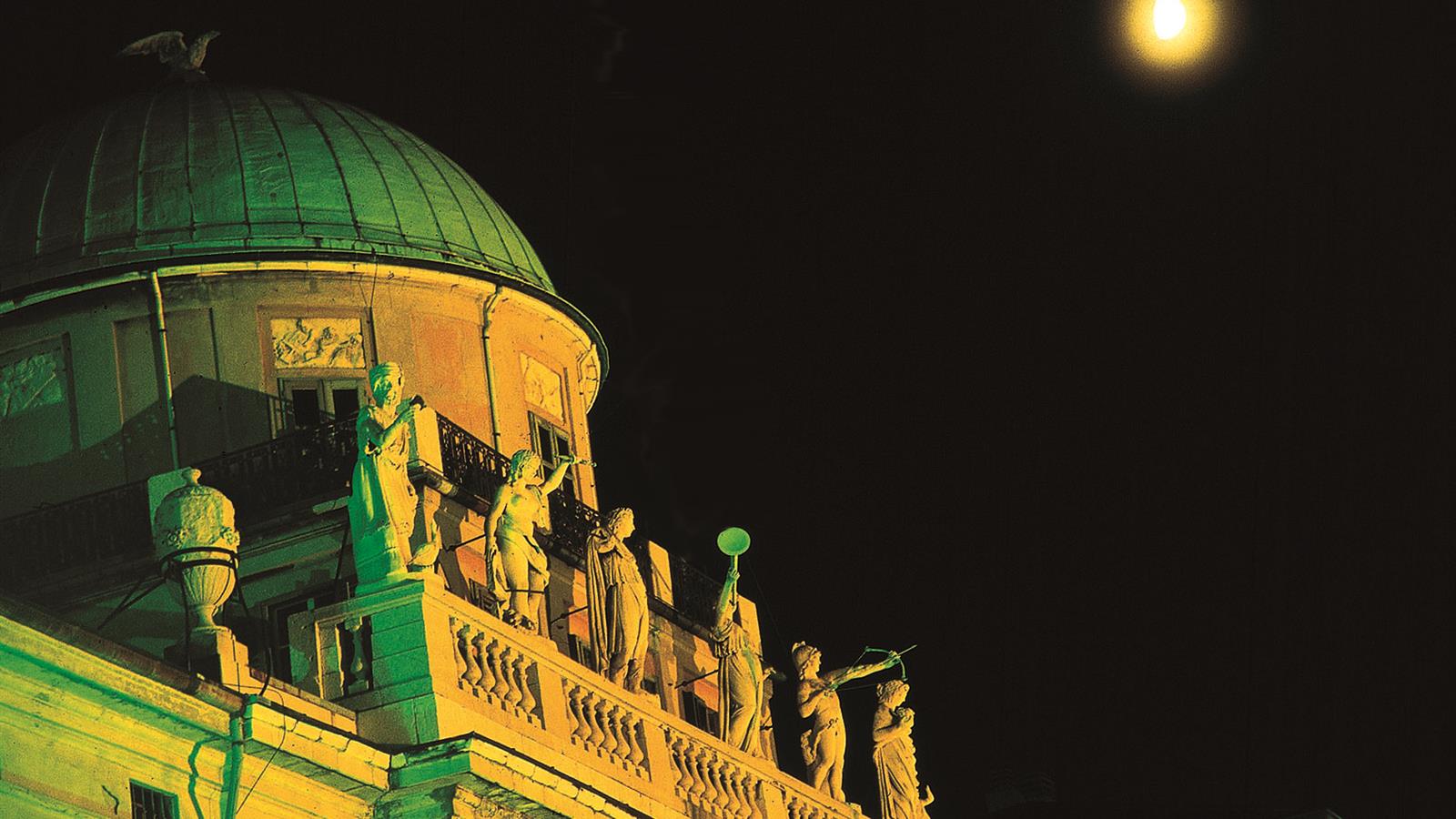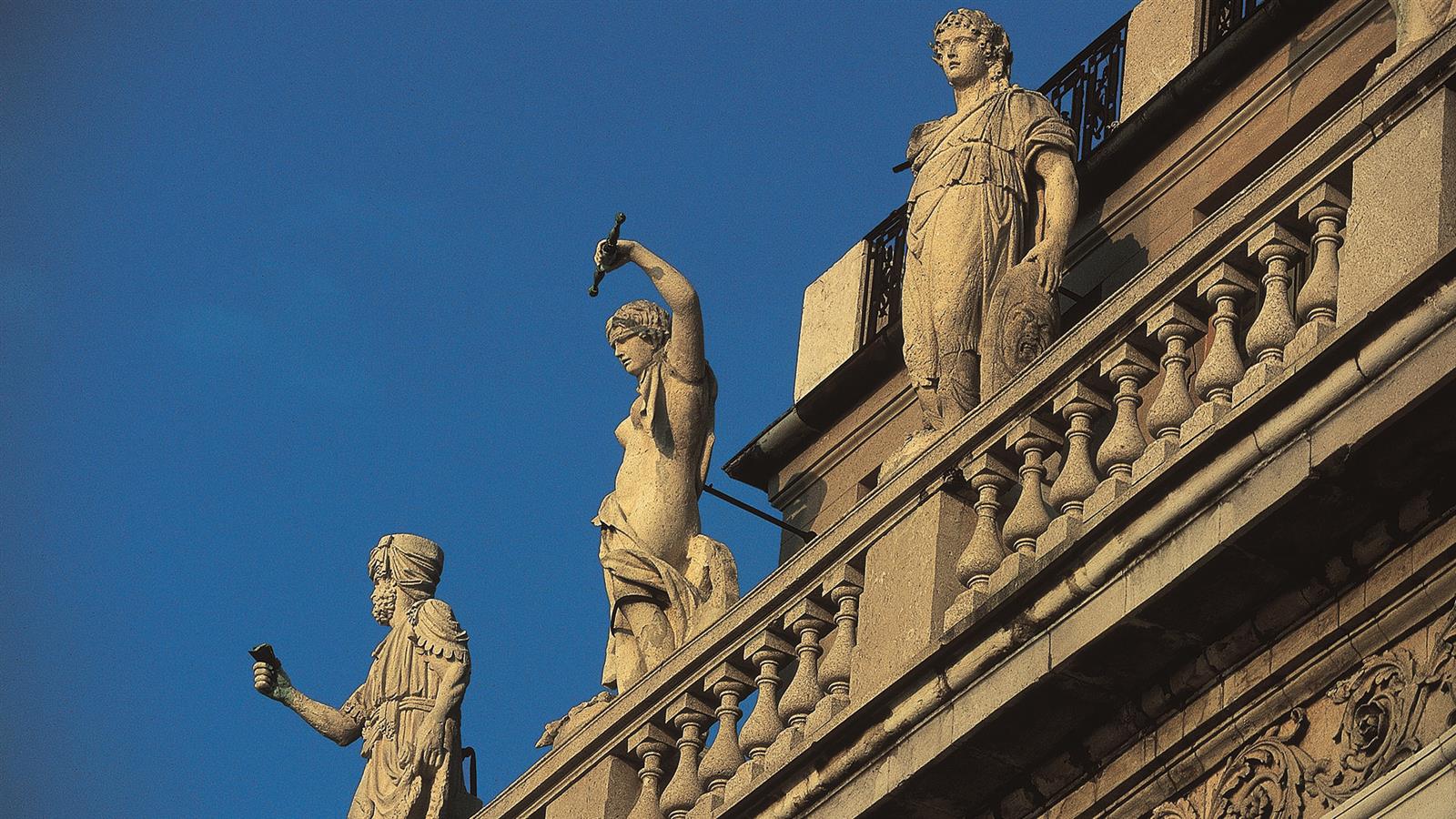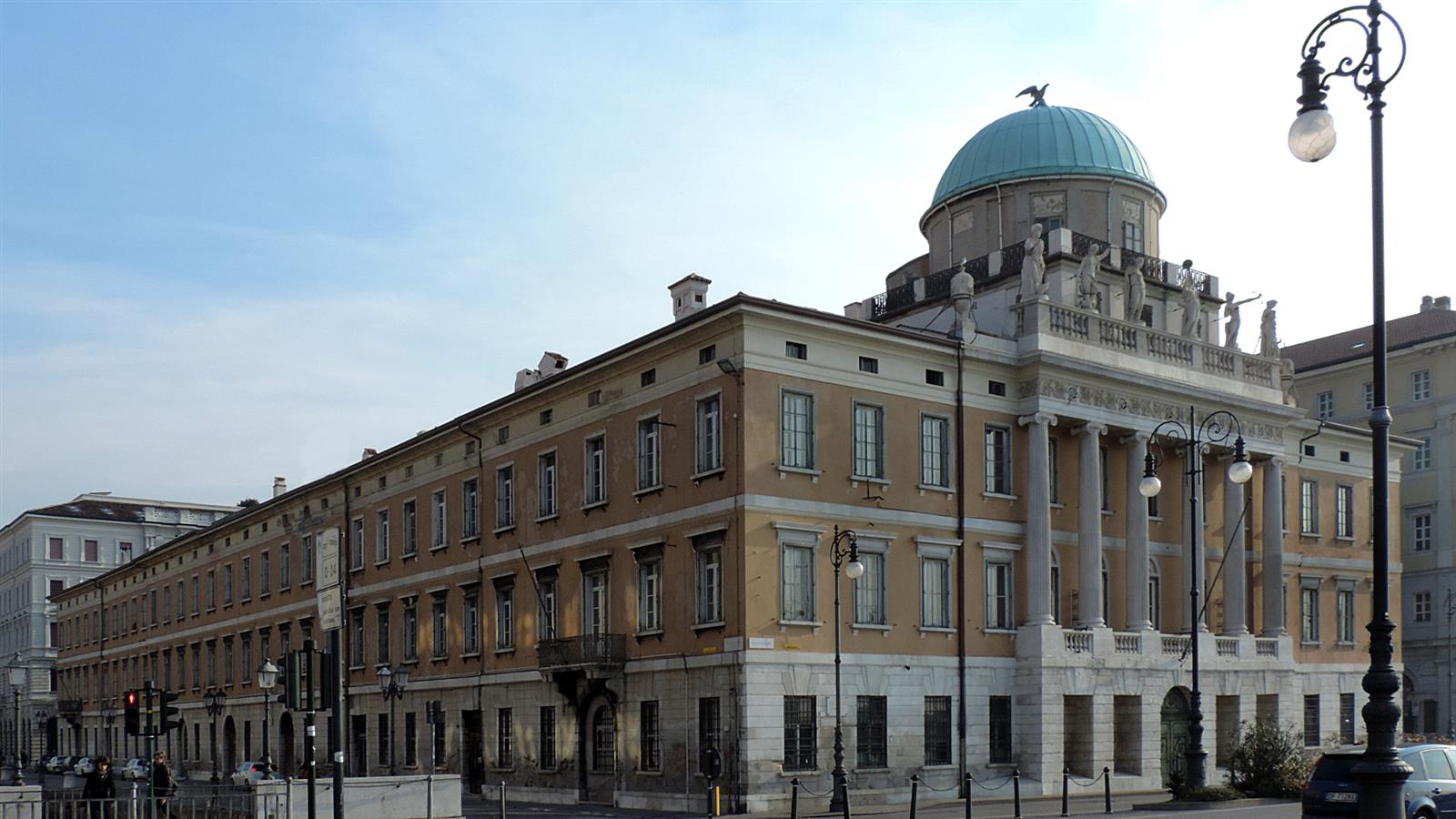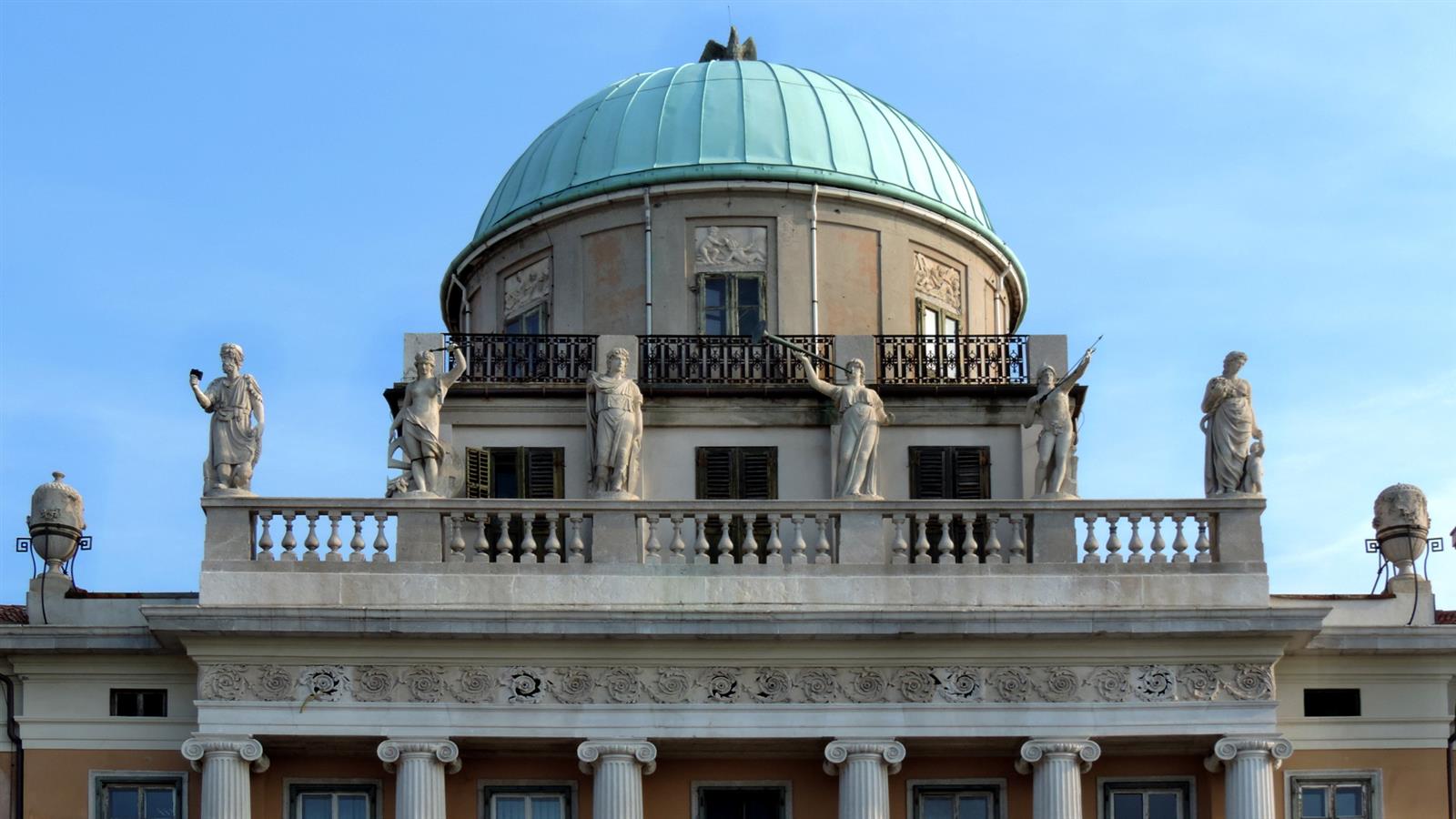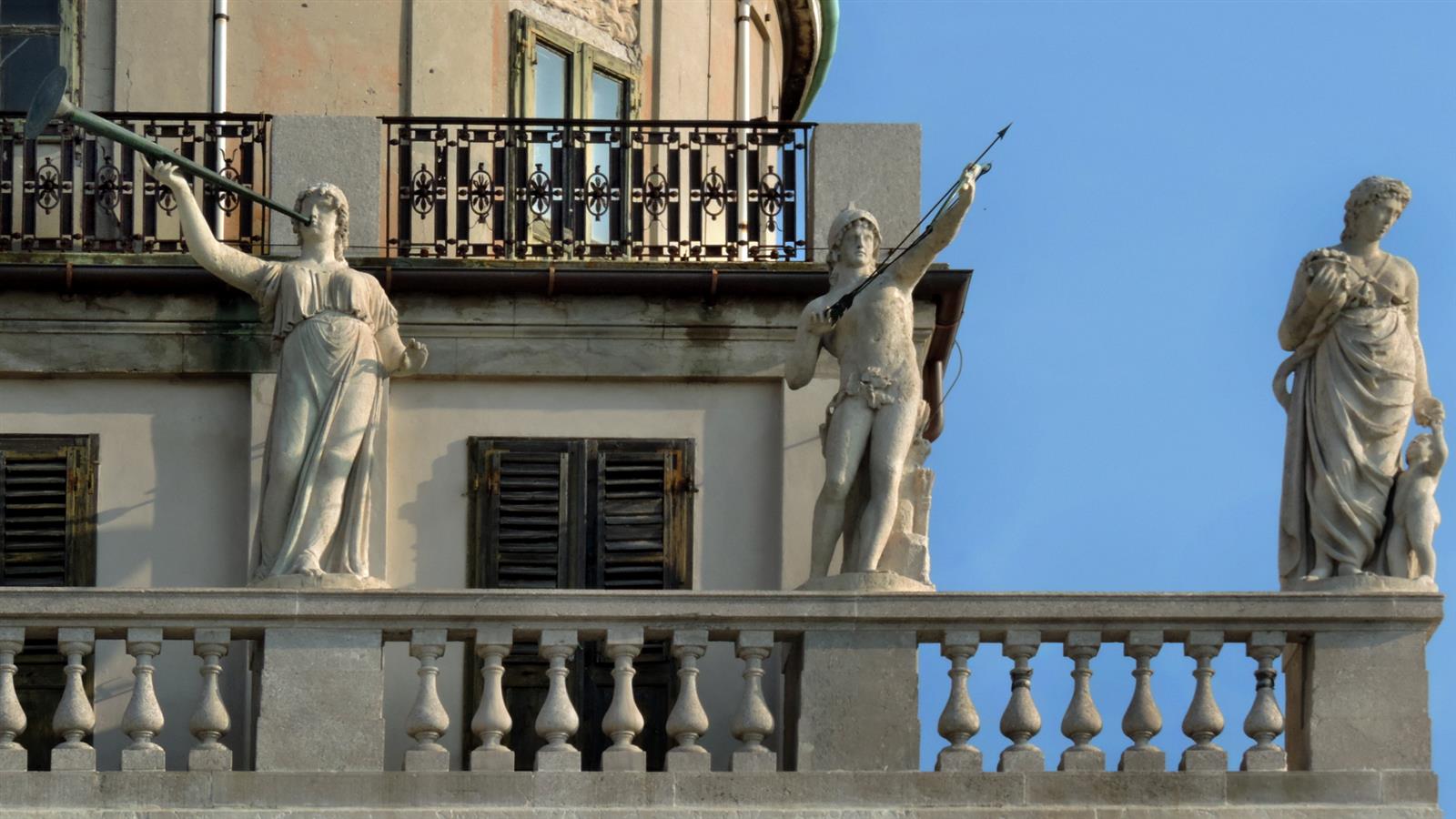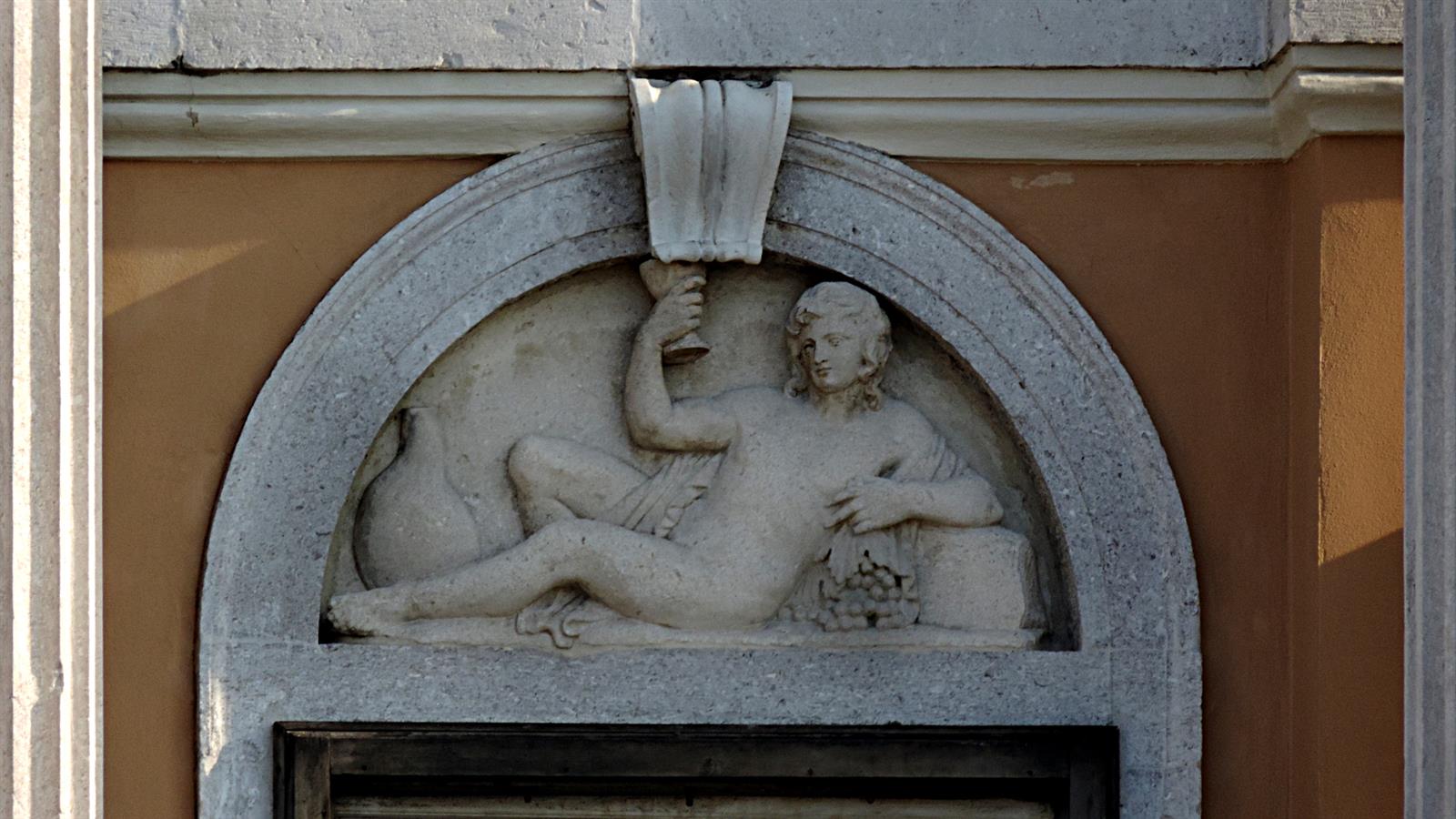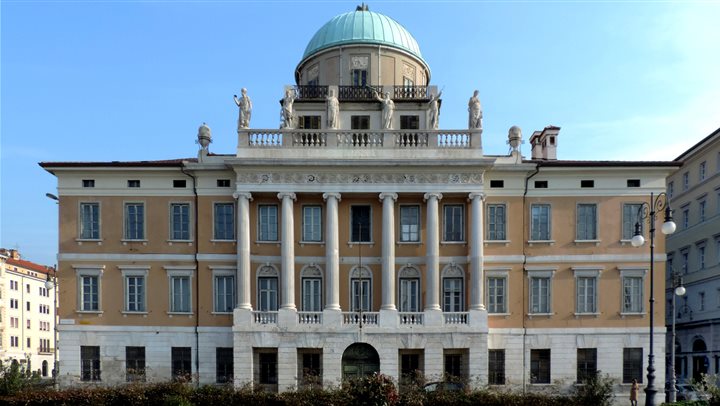Carciotti Palace
Commissioned by the wealthy Greek textile merchant Demetrio Carciotti, the building was realised between 1798 and 1805, based on the project by Matteo Pertsch (1769 – 1837), an architect of German origin who studied in the lively cultural environment of the Brera Academy and the Academy of Fine Arts of Parma.
The neoclassical style of the building reflects not only the identity of the commissioner, but also the architectural reference model of that age: the great French classicist tradition.
Conceived as “a grand factory without economising” in order to accommodate the owner's house as well as warehouses, barns and depots, it occupies a rectangular lot of m. 40×100 that develops around four internal courtyards.
The main façade, facing the banks, is characterised by an avant-corps with five bays subdivided by six grooved ionic columns, supporting a balustrade with six allegorical statues (Portunus, Thyche, Athena, Fama, Apollo, Abundantia) made by Antonio Bosa, a disciple of Canova's.
Behind the attic rises the cylindrical drum that supports the cupola, coated with copper plates (according to the master builder Giovanni Righetti it had the function of an observatory), on the top of which stands the Napoleonic eagle.
All architectural elements are made of Istrian stone, a material which confers monumentality and prestige to the whole façade.
The composition of the main façade is repeated in the rear one, but with semi-columns and four statues (Thypsis, Mercury, Poseidon, Ulysses), the first two by Bosa, the others by Bartolomeo Augustini.
On the inside, after the entrance in which two sculptures are placed (Hercules and Minerva), the main monumental staircase made of Carrara marble with three more statues (Picture, Sculpture and Architecture) leads to the master apartments through a big round hall at double height with 16 monolithic columns and frescoes by Giuseppe Bernardino Bison, with scenes from the Iliad and the Odyssey.
Intended by Carciotti for his male heirs only, in 1831 the building became the first headquarters of the Generali Insurance, then of the Austro-Hungarian Bank, the Allied Military Government and eventually of the Port Authority. It currently belongs to the Municipality.


